Meru National Park Travel Guide: How to Experience the Best of Kenya's Wilderness
Meru national park is a little-known gem in the eastern region of Kenya, which offers a true African safari experience without the crowds. The park boasts a rich wildlife diversity, green scenery and a wild beauty and this gives the tourist a rare opportunity to enjoy one of the most beautiful conservation areas in Kenya. Meru is home to all of the Big Five — lion, elephant, buffalo, leopard, and rhino — though sightings of some species, such as leopards or rhinos, can be less frequent compared to other parks.
The park is also heavily endowed with historical meaning since it is the location where Joy and George Adamson nurtured Elsa the lioness, who became known as Born Free. The visitors are able to enjoy the wildlife on game drives, birdwatching, camping, and guided walks as they admire the scenic beauty of rivers, forests, and savannahs. In this guide, we will walk you through everything you need to know about Meru National Park—its activities, best times to visit, and practical tips for an unforgettable journey.
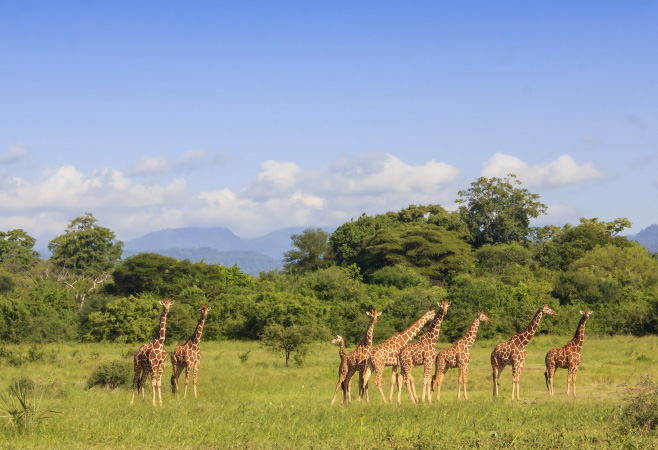
Meru National Park invites you to immerse yourself in the untamed beauty of Kenya's wilderness
- Where is Meru National Park located in Kenya?
- Best time to visit Meru National Park
- How to get Meru National Park
- Meru National Park Entry Fees Explained: What Tourists Should Know
- Complete Guide to Meru National Park Entrance Gates
- Top 7 things to do in Meru National Park
- Where to stay in Meru National Park?
- Travel Tips for Meru National Park: How to Plan the Perfect Safari
- Conclusion
Where is Meru National Park located in Kenya?
Meru National Park is an East Kenya park, approximately 350 kilometers (217 miles) away from Nairobi, the capital city. The park lies to the northeast of Mount Kenya, spanning parts of Meru and Tharaka-Nithi counties. It covers about 870 km², making it one of Kenya’s significant protected areas
The Tana River and the Nyambene Hills border it to the south and northwest respectively and provide the park with a rare combination of landscapes, including savannah grasslands, riverine forests, and swamps. Meru is well approached by road through Nairobi-Embu-Meru road or air through various airstrips. It is in a more isolated area which provides a more natural and isolated safari experience.
Best time to visit Meru National Park
The best time to visit Meru National Park is during the dry seasons, which usually run from June to October and from December to February. The weather is pleasant during these months as there is very little rain. It is also less dense, making it easier to spot wildlife like elephants, lions, cheetahs and some rare species such as the Grevy’s zebra. The water sources dwindle and this attracts animals towards rivers and watering holes therefore increasing the game viewing chances.
The wet seasons are experienced between April and May (long rains) and November (short rains). As the park turns green and fertile, roads may become muddy and difficult to traverse. Nevertheless, it is also the time when the migration is good to watch birds, and the scenery is gorgeous due to new plants.
To have the most comfortable experience during a safari, dry months are the best, particularly in the case of first-time visitors. But in case you want less people and want to spend a bit less on the adventure, the rainy season can also be a satisfying season to explore. Meru National Park is a unique wilderness experience, much less congested than other reserves in Kenya, and offers a memorable safari experience whichever the time of the year.
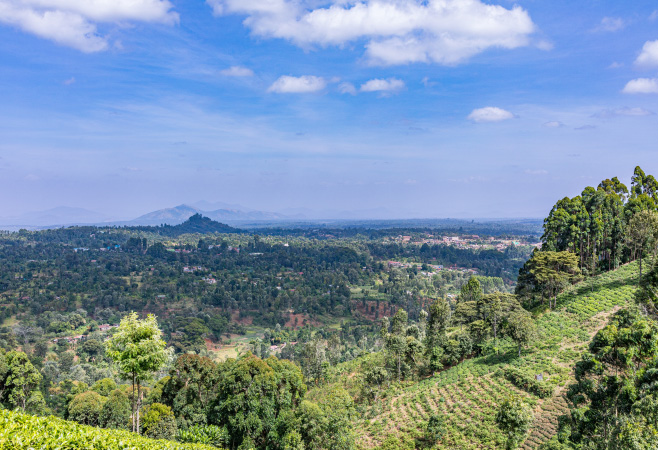
The long cool but dry season between July and October is optimal for wildlife viewing
How to get Meru National Park
The adventure also includes the process of getting to Meru National Park because the trip in itself will provide a glimpse of beautiful Kenyan landscapes. The park can be accessed by road and air and therefore provides the traveler with options on best options that are flexible in terms of budget, time and choice.
By Road
Meru National Park is easily accessed by car, whether it is a self-drive safari or a tour operator. The road trip between Nairobi and Meru is usually 5 to 6 hours, straining on the traffic and the road conditions. The primary road is the highway along Nairobi-Embu-Meru that transits through the beautiful landscapes, tea gardens, and mountain Kenya. There are various gates that are used to enter the park; these are Murera Gate and Ura Gate which are located in the town of Meru. The 4x4 vehicle is highly advisable, particularly in the rainy seasons, since some of the internal roads in the park may be muddy and difficult to drive through.
Driving also gives you a leeway, you can stop at a viewing point or small town. Most tourists visit Meru together with other nearby parks like Samburu, Buffalo Springs, or even Mount Kenya national park.
By Air
Flying is the most convenient choice to those who need to be fast and get there. There are also flights daily between the Wilson Airport in Nairobi and airstrips within or close to the Meru National Park, including Kinna Airstrip or Mulika Lodge Airstrip. The flight lasts approximately 1 hour, thus it is suitable for people who have less time. Groups or tailor-made itinerary charter flights are also possible. Most lodges and camps provide transfers to their locations on landing.
Tips for Travelers
- Prepare in advance: Trips to parks need good cars and familiarity with access points to the parks. By using a safari operator, the experience will be smoother.
- Bring necessities: In case of driving, you can fill up in Nairobi or in the town of Meru, where the petrol stations are scarce in the area of the park.
- Check road conditions: While some routes can become less available during the long rains (March-May).
- Combine with other destinations: Meru is near Samburu and Mount Kenya, and thus it is a wonderful destination on a north Kenya safari circuit.
It is easy to access Meru National Park with the help of road and air transport. It is up to you which route you take either on the scenic drive or on the fast pace flight to get to one of the most unspoiled safari locations in Kenya and be ready to have an adventure.
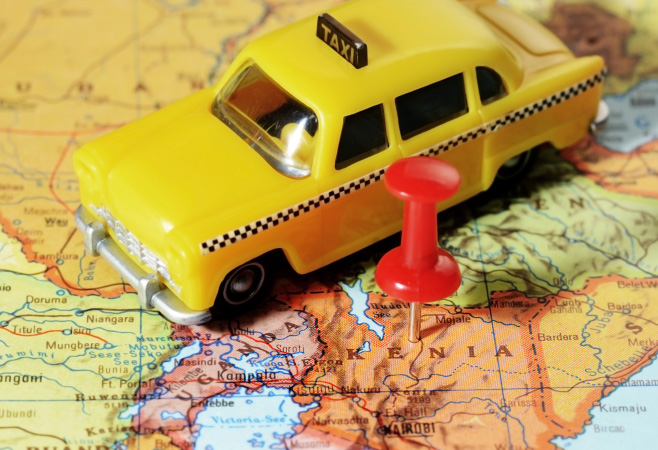
To reach Meru National Park, you can take the scenic route by road transport or the speed and convenience of air travel
Meru National Park Entry Fees Explained: What Tourists Should Know
Entrance fees are periodically reviewed by the Kenya Wildlife Service — always check the latest rates on the official KWS website before your visit.
|
Category |
Adults (per person per day) |
Children (3–17 years) |
| Non-Residents | USD 52 | USD 35 |
| Residents (with valid residency ID) | KES 1,000 | KES 300 |
| Kenyan Citizens | KES 300 | KES 215 |
Vehicle Entry Fees
|
Vehicle Type |
Fee (per day) |
| Saloon car (less than 6 seats) | KES 300 |
| 6–12 seat vehicle | KES 1,000 |
| 13–24 seat vehicle | KES 3,000 |
| 25–44 seat vehicle | KES 4,000 |
| Over 44 seats | KES 5,000 |
Important Notes
- Children under 3 years: Free entry.
- Fees are charged per 24 hours, starting at the time of entry.
- Payments are cashless only (MPesa, debit/credit card, or direct bank transfer).
- Always carry your passport, ID, or residency card for verification at the gate.
Complete Guide to Meru National Park Entrance Gates
Meru National Park has various entrance gates and the park is easily accessible to the various directions. All the gates offer an entry point to different safari trails and depending on your origin and part of the park you wish to visit, your decision will differ.
1. Murera Gate
The gate to Meru National Park is the Murera gate that is the most used by visitors entering Kenya via Nairobi or Meru town. The Nairobi-Embu-Meru highway is well linked with it and thus the simplest route available to the majority of travelers. The park also has numerous popular lodges and camps that are accessible through this gate.
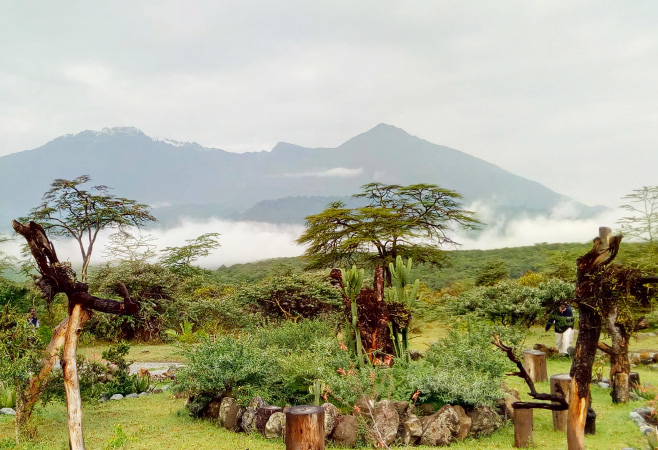
Murera Gate is the main entrance to Meru National Park and is conveniently accessible from Meru town and the surrounding region
2. Ura Gate
Ura Gate is located on the southern side of the park, it is less crowded and the place of entry favors those who want to have a less noisy entrance to the park. Travelers who have their origin in Embu or Chuka often select it. The gate opens to scenic spots along the Tana River and thus it would be a good option to the individuals who enjoy exploring the riverine ecosystems in the park.
3. Kinna Gate
On the north side, there is an easy entry point called Kinna Gate which is the place where a visitor can combine a safari in Samburu National Reserve and a trip to Meru. It provides easy access to the north side of the park and especially among the visitors on their way to the Kinna bandas and camping sites.
Useful Tips
- The Meru National Park is available on a daily basis between 6.00 AM and 6.00 PM (even during weekends and other official holidays).
- The last entry is usually at 6:15 PM, but visitors are not allowed to drive inside the park after dark for safety reasons.
- Proof of identity (passport, ID, or residency card) is required at entry.
- Proof of identity (passport, ID, or residency card) is mandatory at entry
- The entrance fee is paid either through card, bank transfer or MPesa.
- The entrance roads might be a 4x4 vehicle, particularly during the rainy season.
By knowing the gates and their locations, you can plan your trip more efficiently and choose the best route into Meru National Park.
Top 7 things to do in Meru National Park
The park is known to have wild and untamed landscapes that are a combination of rivers, woodlands and open savannahs that are full of wildlife. Compared to Kenya’s more famous parks like Maasai Mara, Meru receives fewer visitors, offering a more tranquil and less commercialized safari experience. Here are the top 7 things to do in Meru National Park that will make your visit unforgettable.
Go on a Classic Game Drive
A classic game drive through the various landscapes of the Meru National Park is one of the most thrilling activities that should be undertaken. Meru National Park is home to all of the Big Five — lion, elephant, buffalo, leopard, and rhino — although sightings of some species, such as leopards, can be less frequent than in other Kenyan parks.
Meru game drives provide an authentic wilderness feel which is not over commercialized as it is in other Kenya safari destinations. To have the most enjoyable experience, schedule the majority of your drives in the early morning or late afternoon when the wildlife is most active and the golden light also boosts your photography. This is an activity that does not only provide you with exciting animal sightseeing, but also enables you to enjoy the great savannahs, green riverbanks and the beauty of the park.
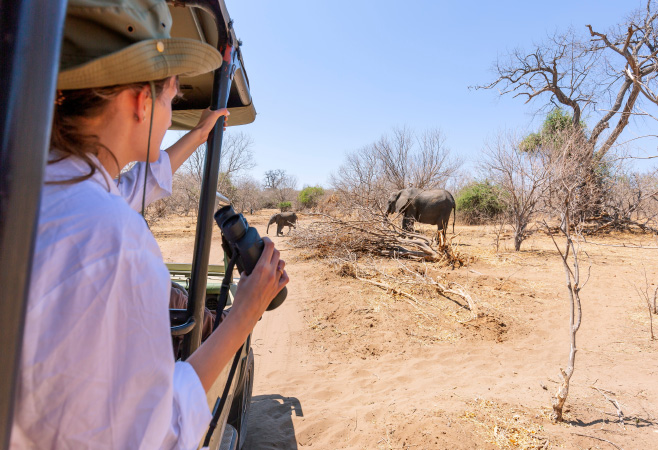
Game Drive Safari in Meru National Park offers game drive options such as Morning game drive, evening game drive, and full-day game drive.
Visit the Rhino Sanctuary
Meru hosts a well-protected Rhino Sanctuary — a fenced conservation area where visitors have good chances of seeing both black and white rhinos. It is among the very few locations in Kenya where the visitor is nearly sure of the sight of these endangered animals in a natural and safe setting. The rhino population is well preserved and the sanctuary is well managed and carefully managed to provide travelers with a rare and informative experience of the safari.
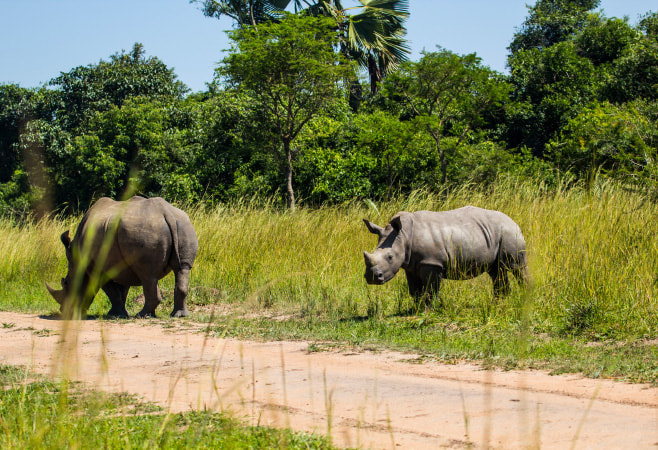
The Rhino Sanctuary is a dedicated conservation area aimed at protecting and breeding the critically endangered black and white rhinos.
Explore the Rivers and Streams
The park is cut across with 13 rivers that form green belts and this attracts animals and birds to the park. You only have to spend some time along the Tana River or the Rojewero River to witness hippos wallowing, crocodiles basking and elephants who come to drink. These riverine regions are also ideal locations to watch birds, and the kingfishers, herons and fish eagles are all observed in these areas.
Discover Elsa’s Legacy
Meru is world-famous as the place where Joy and George Adamson raised Elsa the lioness, later immortalized in the globally renowned book and film Born Free. The visitors are able to visit the site of the reentry of Elsa into the wild, which has become a symbolic historical location in the park. It is an emotional experience which ties conservation, narratives and the loveliness of wildlife.
Visit Adamson’s Falls
Adamson’s Falls is a spectacular waterfall where the power of nature is demonstrated due to the location of the falls on the Tana River. The roaring water, the green vegetation and the picturesque nature makes it a good place to take pictures and rest in the middle of your safari.
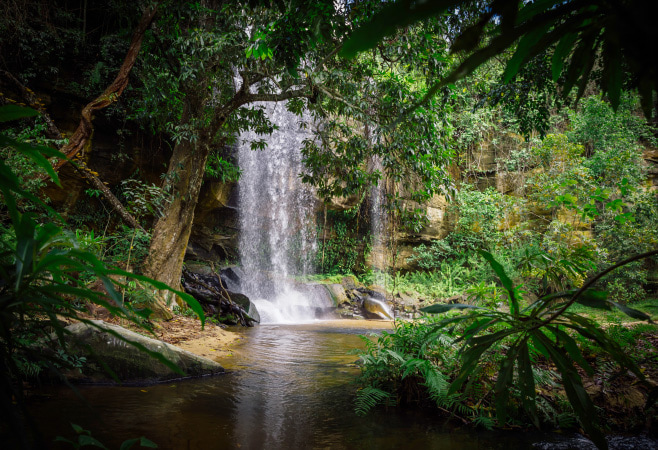
Adamson Falls is well known as the rough water region on the Tana River running.
Go Birdwatching
With more than 400 bird species, Meru is a birdwatcher’s paradise. The park has all opportunities of finding common and unusual birds such as the lilac breasted roller, Pel’s fishing owl, and so on. The best thing to do with this activity is to bring your field guide and your binoculars.
Climb the Highest Point at Meru National Park
Hike to one of Meru’s scenic viewpoints, such as Mugwongo Hill, for sweeping views of the park’s rivers, savannahs, and distant hills. This is an elevated point where the visitors can view rolling savannah, twisted rivers, as well as hills to distant horizons. The hill is not excessively difficult to hike, so even the average traveler can manage it, yet the reward will be memorable.
The hike will be best done in early mornings or in the late afternoons because the lighting is a perfect photography scene and because the temperatures are cooler. It is also a nice experience to be at the top to have a different view of the different ecosystems of Meru, and a good way to admire the size and beauty of the park beyond the game drives.
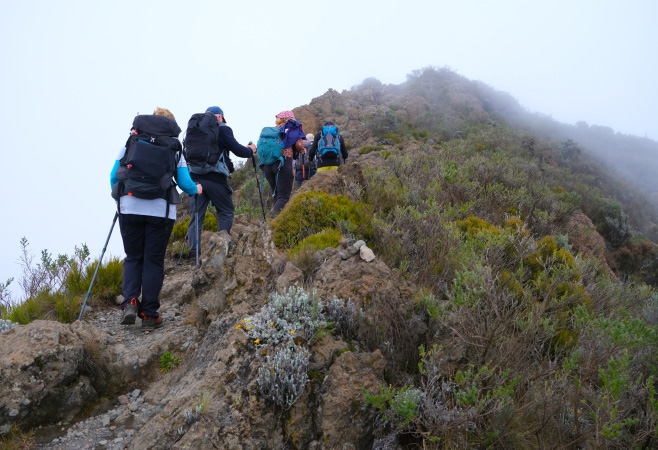
One of the notable viewpoints in Meru is Mugwongo Hill, which offers sweeping panoramas of the park’s rivers, savannahs, and distant hills
Where to stay in Meru National Park?
A major task in planning your safari is to decide where to stay in the Meru National Park and the alternatives range from luxury lodges to budget-friendly camps. The accommodation you select will significantly shape your experience.
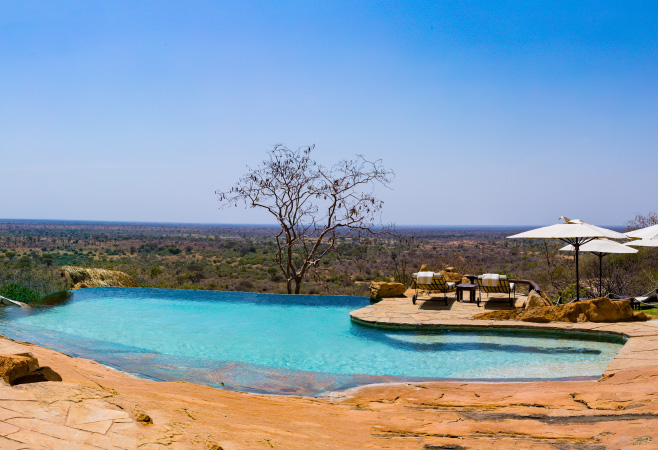
Meru National Park has both luxury, mid-range, and budget options
Luxury Lodges
In case you are seeking a high-end and luxurious experience, some of the most outstanding lodges providing both comfort and exclusivity can be found.
- Elsa Kopje: Meru is also rich in historical significance as it is the place where Joy and George Adamson raised Elsa the lioness, whose story later inspired the world-famous book and film ‘Born Free. The cottages are sculpted into a hillock that is called a rocky kopje (a little hill) giving them a panoramic view of the park. It is romantic and upscale, an ideal choice when it comes to a special occasion.
- Rhino River Camp: This is an environmentally friendly camp located on the shores of the Kindani River and is located just outside the park. It has some of the exclusive safari tents and is renowned for its peaceful environment and good services.
- Leopard Rock Lodge: Set on a rocky outcrop, this lodge offers breathtaking views of the Tana River. With its blend of comfort, seclusion, and scenery, it appeals to nature lovers looking for a luxurious yet intimate retreat.
Mid-Range and Budget-Friendly Options
There are also great choices that provide a wonderful safari experience without the high price tag.
- Ikweta Safari Camp: Ikweta Safari Camp is a camp that is very economical and is right outside the Murera Gate. It has wide and well-furnished safari tents and a big swimming pool. It is very convenient and near the entrance to the park to make it very convenient to undergo game drives daily.
- Murera Cottages: Simple self-catering chalets located inside the park. These are ideal for travelers on a tighter budget, small groups, or families who prefer to prepare their own meals while staying close to nature. Please note that Murera Cottages are not in regular operation and may only open seasonally, so availability should be confirmed in advance before booking.
Campsites
To the most adventurous and cost-effective tourists, there are a variety of different campsites, both government and private, within the Meru National Park.
- Public Campsites: These are simple facilities such as water and toilets. They are a good means of experiencing pure, indigenous bush life.
- Special Campsites: Completely isolated and without amenities. Visitors must bring their own tents, food, water, and all camping gear. These sites are best for experienced campers seeking solitude and a true wilderness adventure.
Travel Tips for Meru National Park: How to Plan the Perfect Safari
Meru National Park in Kenya is one of the least popular safari parks of the country, which provides wild nature and amazing wildlife sightseeing, as well as a captivating conservation story. To make the most of your trip, here are some essential tips for Meru National Park that will help you plan a safe, enjoyable, and memorable adventure.
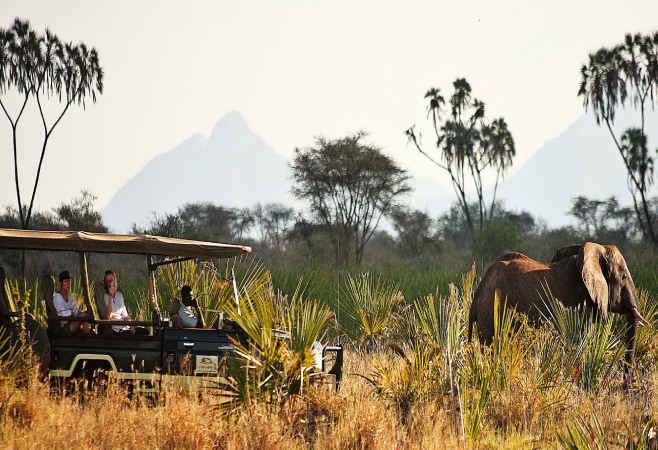
Travel essentials and get inspiration from the best guide to Meru National Park.
Wildlife Viewing Etiquette
The park hosts the Big Five and numerous other species thus patience and respect for wildlife are essential. Keep quiet, keep away and do not feed the animals and maintain a safe distance. Active wildlife is likely to view morning and late afternoon game drives that offer the best opportunities to see the wildlife.
Health and Safety Hazards.
Always carry mosquito repellent, cover your body especially your sleeves during the evening and make sure that you have taken the recommended vaccines such as yellow fever. It is also recommended to use malaria prophylaxis. Park rules should always be observed- never leave your car when on a game drive and always maintain a safe distance with the wildlife.
Pack Smart
Carry colorless attire that would fit hot days and cold nights. A good pair of field glasses, a camera with additional batteries, sun screen and a wide-brimmed hat would be necessary. Do not forget the reusable water bottles to keep yourself hydrated.
Respect the Environment
Meru is a significant conservation site and therefore takes care of the natural environment of the park. Instead, litter should be avoided, one should not stray outside the roads in the game drive, and one should patronize environmentally friendly lodges that help in conserving and developing the communities.
Travel Documents for Meru National Park
You should have your travel documents in place before you travel to Meru National Park on a safari adventure.
1. Electronic Travel Authorization (eTA):
Since January 2024, Kenya has officially replaced the eVisa system with the Electronic Travel Authorization (eTA). This is an online authorization which has substituted the earlier eVisa system. It is an easy application that has to be filled before your flight to prevent wasting time at the airport.
2. Passport Requirements:
Your passport must be valid for at least 6 months from the date of entry into Kenya and must contain at least two blank pages for entry and exit stamps. Any passenger carrying temporary or emergency passports should ensure he or she does this pre-clearance with their airline and Kenya Immigration department.
3. Health Documents:
Your vaccination certificate against yellow fever is required in case you are arriving or transiting to the countries that have risks of yellow fever. Prophylaxis against malaria is also highly encouraged.
4. Travel Insurance:
This is not compulsory but it is very necessary to have extensive travel insurance including medical emergencies, cancellations of trips as well as safari activity cover.
Conclusion
Meru National Park is one of the undiscovered gems in the Kenya safari circuit, which presents tourists with the best combination of various wildlife, spectacular scenery, and cultural heritage. Whether it is game drives where visitors can spot the Big Five (lion, elephant, buffalo, leopard, and rhino) or the serene moments at Adamson Falls and Elsa’s Grave, the park is a place that is both beautiful and historical. Its relatively low number of visitors in comparison to other parks guarantees a truly authentic safari experience
This guide also highlights crucial details such as the fees and gates, the best activities, and travelling tips among others, to make it easier to organize your visit. Don’t forget to prepare your travel documents — Kenya requires an obligatory eTA for most visitors and be ready not only for the adventure, but also for the quietness and tranquility that Meru offers. Meru National Park will leave an unforgettable mark in your life whether you are a passionate wildlife lover, a photographer, or just a person willing to have a peaceful getaway into the natural world. It truly is one of Kenya’s hidden beauties waiting to be discovered
Related Articles
- The Hidden Gem of Kenya: An Essential Travel Guide to Laikipia County
- Journey to the Rift Valley: The Ultimate Lake Elmenteita Travel Guide for Adventurers
- The 14 Best Cafes and Coffee Shops in Nairobi for Fresh Brews and Tasty Meals
- Unveiling Swahili Secrets: A Comprehensive Travel Guide to Old Town Mombasa
- Gateway to the North Rift: The Top 12 Hotels in Eldoret for a Truly Hassle-Free Trip











